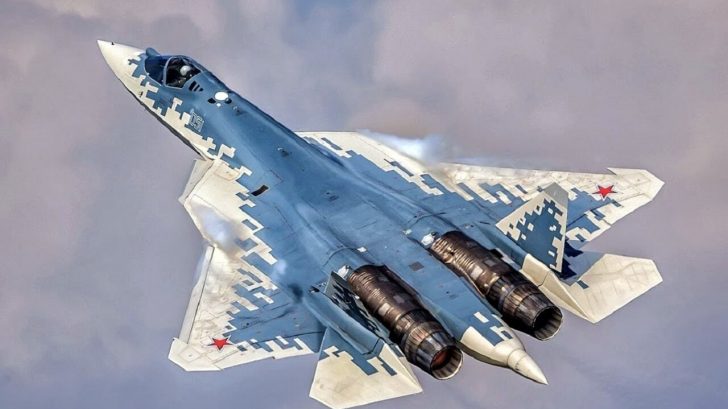The Soviet Union outlined the requirements for a next-generation fighter in the late 1970s. With the rising need for more advanced weaponry, the nation called for a multifunctional fighter with advanced ground attack capabilities.
Two In One
Two initiatives were created: the Multifunctional (MFI) and the Light (LFI) Frontline Fighters. Mikoyan began developing its MiG 1.44/1.42 under the MFI, while Sukhoi did the same by starting its own program in 1983.
Even though the company was not an official participant, Sukhoi was still able to develop technologies for a next-generation fighter. Their work later led to the creation of the Su-47.
When the USSR dissolved, the MFI program was repeatedly delayed due to a lack of funding. As a result, the Russian Ministry of Defence canceled both initiatives. Instead, they focused on creating another aircraft through the Prospective Aeronautical Complex of Front-Line Air Forces (PAK FA) program, which was considered a more modern and affordable alternative than the last.
PAK FA
The program aimed to produce a multi-role 5th-generation fighter that would soon replace the Su-27 and MiG-29. By the spring of 2002, Sukhoi emerged as the winner, and the Ministry approved the design two and a half years later.
The Sukhoi-designed plane performed its maiden flight on January 29, 2010, after a myriad of delays concerning its engine caused the flight to be pushed back. Problems would soon pop up regarding the plane’s poor fatigue life and early structural cracks. It was evident that it needed a structural redesign, a reinforced airframe, an elongated tail sting, and an enhanced wingspan which would increase the takeoff weight to 25 tonnes.
As such, more prototypes failed during testing, with the delivery of the first batch getting pushed back from 2015 to 2020.
Supposed Specifications
Russia boasts that the Su-57 has G limits surpassing 9.0 and is capable of flying at Mach 2. An internal 30mm autocannon was fitted into the plane, with the addition of a dozen hardpoints – six external and six internal.
Furthermore, the fighter apparently has advanced avionics, including a powerful radar, IRST capabilities, an ultraviolet missile approach warning system, and an electronic countermeasure suite.
Stealth-like Capabilities
With Russia suffering from Western sanctions, it is not farfetched to think the program will be hobbled in the coming years. Analysts also don’t believe that the Felon is as stealthy as American F-22s and F-35s or even the Chinese J-20s. They argued that the aircraft is probably better referred to as “having stealth-like capabilities.”
Broken Promises?
While the Russian government has praised the program, the country still has less than a dozen operational Su-57s as of 2022. Still, Russia is expecting 22 more Felons for the next two years and a total fleet of 76 by 2028.
Now that production is ongoing, Russia is also looking to export the fighter to foreign nations. After all, developing a modern stealth fighter is a costly endeavor. This is especially true for the Su-57 program, which has had a lot of setbacks and delays.
Russia plans to sell the export version, the Su-57E, to foreign militaries. However, the model has been unsuccessful in convincing several countries to pick it up. Even India, which signed earlier in its development, backed out of the deal after claiming that the fighter did not meet the requirements for stealth and avionics. So far, only Algeria has signed an order for 14 Su-57Es, which are expected to be delivered in 2028.



